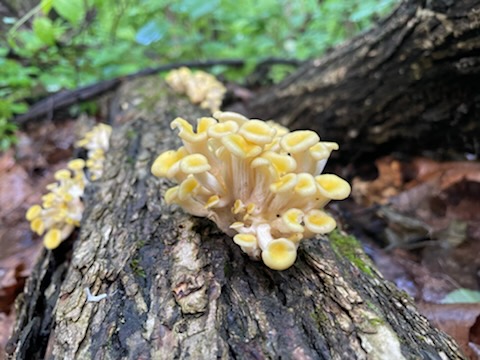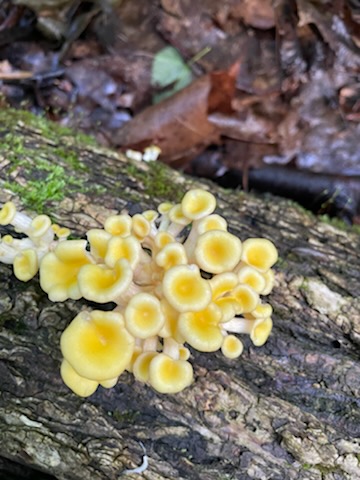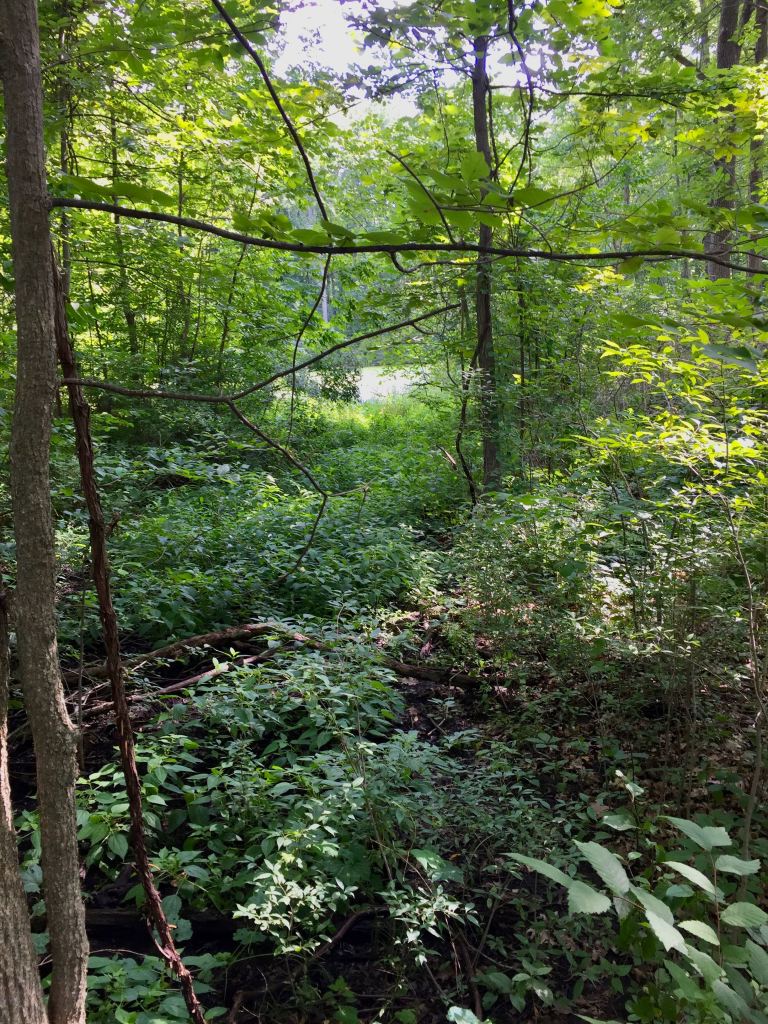On a cool, cloudy afternoon earlier this summer, we stewards hunted for garlic mustard in the marshy woods of Charles Ilsley Park. The air was crisp, and I could feel the wind brushing my back as I walked. I kept my eyes peeled for the biennial invasive, doing my best to contribute to ecological wellness. That was when something unusual caught my eye. I stumbled upon a wet, decaying log with fungal clusters along its back. After asking some identification questions, I found that this fungus was none other than the Golden Oyster Mushroom (Pleurotus citrinopileatus).
How interesting! Each individual mushroom had a slightly different cap and shape despite being in the same cluster. The subjects in each cluster proudly displayed their bright yellow caps, earning this oyster mushroom its name.

Mushrooms Escaped from Cultivation
The golden oyster, or yellow oyster, mushroom originated in the woodlands of Russia, Japan, and Northern China, where it enjoys cool, shady woodland areas. The golden oyster thrives on decaying wood, especially elm, but is capable of growing on several substrates. Thanks to the variety of culinary and medicinal uses, the fungi has long been cultivated across Asia, and is now widely grown in the United States.
The joys of farming golden oyster fungi had consequences, though. According to Andi Bruce, a professional mycologist, the golden oyster mushroom escaped cultivation and made its way into natural habitats, the first known cultivated fungus to do so. As far as we know, their pale, pink spores are easily spread by the longhorn beetle, Callipogon relictus.

Learning About Golden Oyster Mushrooms
The golden oyster mushroom made its first appearance in 2012, and has now been found in several states, including Michigan, Ohio, Wisconsin, and Iowa. What will be impacted by this nonnative fungus? Or will anything be impacted at all? Only time will tell. On a positive note, while further research is needed, the golden oyster might have use absorbing toxins in the environment such as oil spills and wastewater. Maybe some good can come out of these chewy, fragile mushrooms.
Do the unknowns of the golden oyster mushroom shake you? Do you want to unravel golden information on this record-breaking fungi? Citizen scientists can help by taking photographs of specimens they’ve come across and posting them to iNaturalist! The Osmundson Lab from the University of Wisconsin-La Crosse is continuing to accept samples for future research. If you want to take a step further in future research contributions, consider submitting a live sample. Instructions can be found here.

What a mystery this fungus is! It will be exciting to learn more about the golden oyster mushroom as we learn more about its spread and ecology in North America. Who knows what else will unfold? The world is such a wonderful place full of secrets waiting to be discovered, a world beyond internet and textbooks!
When taking a stroll in one of our beautiful parks, ask yourself, “What can I learn on this path today?” Perhaps on a morning walk through Bear Creek Nature Park, you might notice how beautiful bee balm splashes the fields in purple swaths. As you take in the view, a refreshing smell may hit your nose. With further exploration you may find out it was none other than bee balm itself, giving you a refreshing aroma as a “thank you” for enjoying nature’s beauty. Maybe you’ll walk on Paint Creek Trail and hear a faint rustling in the tall grasses. In the brief moment of asking yourself, “What was that sound?”, an innocent fawn may race across the wet prairie, with its spots disappearing as quickly as its sound.
Nature is so beautiful and mysterious, with so much to admire and understand. Don’t just walk in the parks. Take time to admire blue birds in the sky, or milkweed waving to monarch butterflies. Take a moment to appreciate sensitive ferns and lupines, flourishing in the soils they stand in. When exploring our parks, your observance may lead to discoveries!